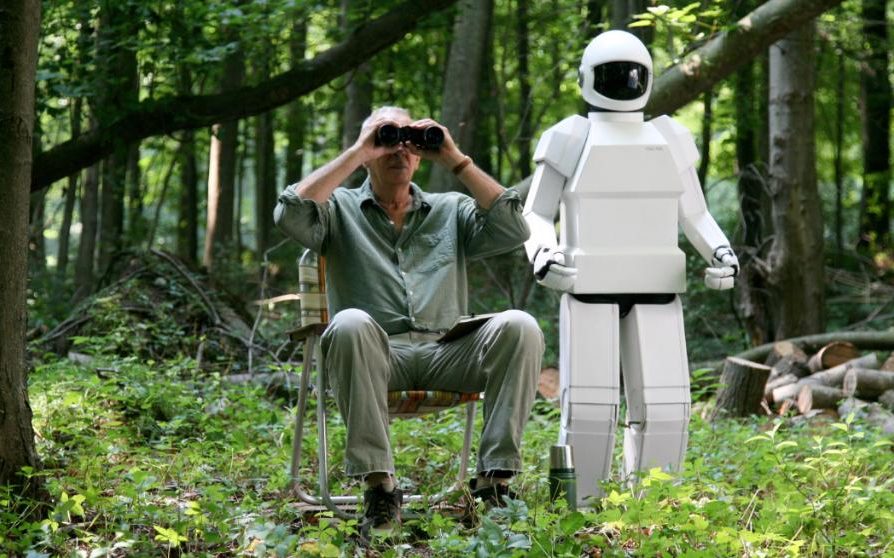 Among other diversions, each new summer always brings an opportunity to recline the couch, turn on the TV, and relax for a little while. Whether we’re catching up on the latest season of our favorite show on Netflix, watching the latest horror flick with friends or loved ones, or just watching a silly comedy to pass the time, we enjoy using our summer to consume new shows and movies. This summer is no different, and with the recent release of mainline blockbuster films like Guardians of the Galaxy 2 and Alien: Covenant, it’s probable that many of us will be spending a few of our days in the theaters, catching up on all the latest hits.
Among other diversions, each new summer always brings an opportunity to recline the couch, turn on the TV, and relax for a little while. Whether we’re catching up on the latest season of our favorite show on Netflix, watching the latest horror flick with friends or loved ones, or just watching a silly comedy to pass the time, we enjoy using our summer to consume new shows and movies. This summer is no different, and with the recent release of mainline blockbuster films like Guardians of the Galaxy 2 and Alien: Covenant, it’s probable that many of us will be spending a few of our days in the theaters, catching up on all the latest hits.
However, why must we confine ourselves to such a limited selection of content? ~700 feature-length movies are released every year (just in America, I might add), and there were over 18,000 movies on Amazon Prime as of 2016; and yet, most of us will only ever take the time to skim our movies or shows from just beneath the surface of the deep ocean of content available for us to consume.
This summer, I encourage you to buck that trend. There are many beautiful, engaging, and thought-provoking films out there that rarely get their deserved spotlight, and I believe that it is my duty to contribute in whatever small way I can to get the word out about these films so that they can get the recognition that I believe they deserve. Here are 4 few lesser-known, older, or just plain unique films that you should definitely take the time to watch this summer. WARNING: Minor spoilers about some of the plot points for the four relevant films in this article lie ahead. If you want to go into them completely blind, read no further than the film titles before watching them. Trust me—they’re all worth checking out.

Robot and Frank
What It’s About: At times light-hearted and amusing, at others emotional intimate, Robot and Frank tells the story of Frank, an aging ex-burglar who has become increasingly decrepit and dissociated with his life. His children have become concerned that he can no longer take care of himself on his own, so his son buys him a talking humanoid caretaker-robot designed to help maintain his physical and mental health. Instead, Frank recruits the robot to assist him with robbery heists, and what follows is a ridiculous dra-medy following the exploits that the unlikely pair get themselves into.
Why It’s Good: Played by Frank Langella, Frank’s performance is goofy, yet heartfelt and engaging. Frank’s thoroughly enjoyable character, along with his emotional relationship with his children and the interesting near-future concept of the narrative itself, makes this film interesting and engaging, both as a fun story and as a unique lens through which to view the experience of getting old.
Possible Parental Warnings: A fair amount of profanity; a couple can be seen making out.
The Fall
What It’s About: The Fall is a quite exotic (and resultantly expensive) beast, as far as movies go. Directed by Tarsem Singh, a man who normally can be found directing music videos and commercials, The Fall represents Singh’s passion project, and the film’s budget and behind-the-scenes information reflect this fact. The Fall cost ~$30 million of Tarsem’s own money to make, and it was shot in 28 different countries. The film’s narrative is similarly unusual. Based off a Bulgarian film called Yo Ho Ho, the film tells the story of an injured, disheartened stuntman and an innocent little girl who find themselves in a hospital together. While wandering through the hospital, the girl runs into him, and he begins to tell her stories to comfort her. She butts in occasionally to change and add things, and the stories become increasingly complex, emotional, and tied to their real lives.
Why It’s Good: What makes this film so unique is that much of the film is actually spent within the imagined world of the girl and the stuntman as they narrate the events of that world that happen on camera. This, coupled with the large budget availability and many locations, allows Tarsem to give the film its most remarkable quality: its artistic flair. This film is gorgeous. The cameraman and set designer take advantage of their beautiful locations, framing and building scenes artistically and intentionally to the point where almost every frame in the film could be wallpaper material. The film is filled with amazing wide shots of colorful cities and structures, intense battles and ceremonies, and beautiful, sprawling landscapes, as well as close shots of tense action or emotion. Basically, imagine Zach Snyder’s aggressive, swinging, slo-mo- and cut-happy camera style in action scenes, but where the objects on-screen are actually colorful and exciting rather than the same grim shades of brown, gold, and the occasional flashes of red.
Coupled with the aesthetic beauty of the film is an emotional and surprisingly intricate narrative. As the real-life background narrative of the film gets more intense, and the camera cuts more and more between the real world and made-up one, objects and characters in the imagined narrative begin to carry symbolic significance, hinting at aspects of real-life characters and events. The tension in the real-world narrative also brings out some talented performances, especially in the little girl. The young female actress’s performance is extremely convincing, especially for a child actress, as she puts on a gut-wrenching veil of pure innocence. All in all, a cleverly constructed (both in the visual and metaphorical sense) narrative, some good performances, and a thoroughly confusing and thought-provoking ending (only spoiler I’ll offer is that it has more to it than meets the eye!) make this film definitely worth adding to your watchlist.
Possible Parental Warnings: Some blood and wounds and the occasional vomit (it is, after all, a hospital); very minor and infrequent profanity.
_01.jpg)
The Defiant Ones
What It’s About: A 1958 spiritual predecessor to future prison escape films like O Brother, Where Art Thou?, The Defiant Ones tells the story of two prisoners, a white man and a black man, whose warden chains them together before placing them in the back of a transport truck. When the truck crashes into a ditch, the two men make the snap decision to escape together, running off into the wilderness still chained together. Initially abrasive and mistrustful towards one another on account of their racial differences, the men eventually tolerate and even come to be friends with each other, breaking the barriers of their racial hatred through sheer necessity as they attempt to escape the authorities.
Why It’s Good: A film that attempts to tackle issues of day-to-day race relations this early on, and in a nuanced and interesting way to boot, is quite an impressive feat. The characters and their interactions are realistic and non-preachy; both men are prejudiced, flawed, human individuals who must learn to overcome their biases and work with each others’ flaws. The film’s quiet, slow-boiling, yet immersive action adds to its emotional intensity and closeness. Devoid of almost any noise except the rushing of dangerous rivers, the barking of police dogs and crickets at night, we get an extremely personal view of the struggles of and discord between the two characters. This authentic and personal feel makes the eventual development of a friendship of the two main characters that much more powerful and engrossing. Older films have a stereotype of lacking true acting skill and camera work, making their stories exaggerated and unenjoyable to watch. On the contrary, The Defiant Ones is shot and framed very simplistically and sparsely, which make both its personal drama and larger critique of racial biases extremely watchable.
Possible Parental Warnings: Some cursing and racial slurs; a few intense situations.

Metropolis
What It’s About: One of the earliest full-length science fiction films, German filmmaker Fritz Lang’s 1927 masterpiece Metropolis was in large part lost to the ages until recently. After the original premiere cut was lost, over a quarter of the original film was lost until a damaged copy of the original film was discovered in 2008. The full-length film tells the story of Freder, the son of a wealthy company-owner named Joh Frederson, who becomes aware of the mistreatment of Joh’s workers after wandering into a factory. He develops an increasing passion for their plight, meeting a worker advocate named ‘Maria’ who tells them that a ‘Mediator’ will one day come who will help them to have a more equal stand at the negotiating table with their bosses. Frederson becomes aware of this Maria, and attempts to stop her, and the scenario escalates from there.
Why It’s Good: This film is a visual masterpiece, a stunningly cohesive view of the far future whose image still holds up today as aesthetically interesting. Given how old relative to us and new relative to the sci-fi genre the film is, the film’s acting does get a bit cheesy and over-exaggerated at times. This small flaw is far outweighed by the film’s wonderfully artistic conception of the future—as well as its extensive portrayal of class struggle. This film gives an interesting window into an early 20th-century view on the conflict between ‘worker’ interest and ‘boss’ interest, and the accelerating tensions of modern industrial society, years before the Internet age. It’s a quite rewarding experience to see on film, so early on and so artistically framed, an expression of some of the societal problems modern industrialization creates, such as the disconnect that modern workers at giant corporations feel with their labor. Overall, the film pushes a fairly moderate agenda throughout most of its fairly lengthy 2.5 hour runtime: “head (bosses) and hands (workers) need a mediator (someone who can relate to both groups and bring them together to end their conflict and sort their differences via compromise, i.e. Freder)”. What’s most interesting about this film, though, is the actual journey that the film takes towards arriving at the resolutions of its main tensions and conflicts; through that journey, we get to witness a fascinating and engaging expression of early views towards the exploding inequalities and dangers of modern, urban society.
Possible Parental Warnings: Some revealing and/or partially see-through female dancer outfits.
To conclude, these are not the only good non-mainstream films out there to watch. They’re four among thousands of other films and, in fact, they’re nowhere near the best. More than anything else, this article is mainly a wake-up call. Filmmakers have been working their magic for over a century, and there are dozens upon dozens—if not hundreds—of films out there, films as good as, if not better than, the above four, just waiting for you to discover. I encourage you to take some time this summer to try to find and experience them. I promise you, it’ll be worth it.







